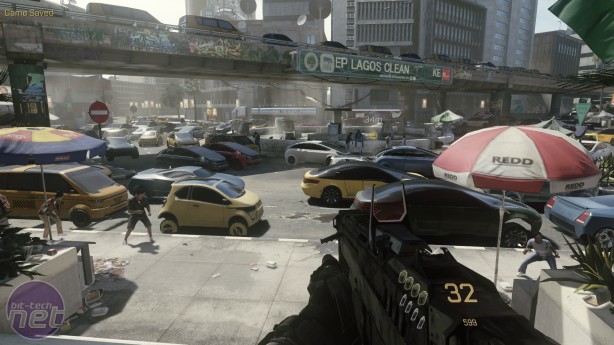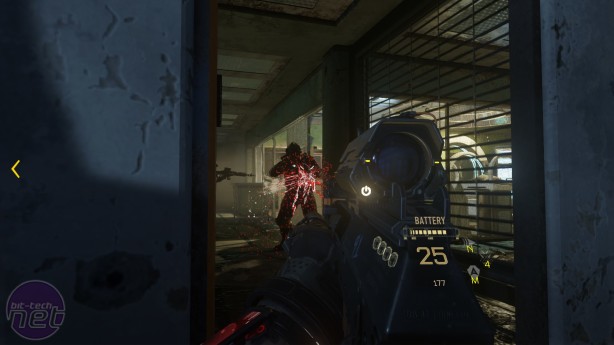
Call of Duty: Advanced Warfare Review
Price: £39.99Developer: Sledgehammer Games
Publisher: Activision
Platforms: PC, Xbox One, PS4
Version Reviewed: PC
First, the good news. Advanced Warfare is unquestionably an improvement over the deeply mediocre Call of Duty: Ghosts. Liberated from the shackles of modernity, Sledgehammer's first stab as lead developer on Call of Duty provides a single-player that is broadly entertaining and a multiplayer that has more than a whiff of Titanfall's kinetic delights about it. Now, the bad. Somewhat like last year's Assassin's Creed IV, Sledgehammer's efforts merely distract from the series' ongoing troubles rather than addressing them directly. What's more, compared to Ubisoft's piratical pleasures, Advanced Warfare's near-future setting is a less convincing facade.
According to Sledgehammer's vision, the future of warfare is drones, powered exoskeletons, and Kevin Spacey. The military of tomorrow exists in the shadow of private companies, of which the Atlas corporation dominates over all. Starting out as a grunt in the US military, your character (named Mitchell) loses an arm and his best friend Will in the opening mission. It transpires Will happened to be the son of Atlas owner Jonathan Irons (played by Spacey), who persuades Mitchell to join the ranks of Atlas with the offer of a robot arm, or as Irons puts it, "A second chance".
Over the course of fifteen missions, you discover that this giant corporation - bound unto no-one and with access to terrifyingly powerful weaponry - might not be the angelic force which it initially seemed. The story might be dumber than the average Daily Mail commenter, but at least the near-future setting alleviates the problematic subject matter seen in previous games.
Furthermore, there are no cheap attempts at shock or controversy, and the fact that Kevin Spacey essentially wears a neon sign on his head that reads "HELLO I AM THE BAD GUY" is actually rather refreshing. He even has an understandable motivation, which is "politicians never get anything done." Granted, this notion leads him to attack THE ENTIRE WORLD, but it's fun shlock regardless. In addition, given Call of Duty's trajectory in recent years, accepting itself as dumb sci-fi action is preferable than stumbling attempts at profundity.
A whole new world to battle in also means a whole new set of tools to fight with. At the centre of your arsenal are the various types of "exosuits" you wear while on mission. These offer a variety of powers from being able to "ski" a short distance to avoid enemy fire, zip around levels using a grappling hook, or simply punch enemies into next week. Different suits are used for different levels, although the game only informs you on what setup you'll be using moments prior to a mission's commencement. The exosuits do lend greater consistency to how the game plays, but once again Call of Duty builds the missions first and then gives you the tools to overcome them, rather than providing you with a series of universal mechanics, and then constructing levels to accommodate multiple play-styles.
Another unfortunate carry-over from Ghosts is the globetrotting, gimmick-hopping nature of the campaign. Your travels take you from the rebuilt New Baghdad to Nigeria, San Francisco and even the frozen wastes of Antarctica. Meanwhile, disposable mission mechanics include drones, mech suits and cloaking devices. It isn't quite as callously throwaway as Ghosts, with some ideas returning in later missions, but it still struggles to establish any kind of flow, and is rarely content to simply let you enjoy the shooting for very long. This is epitomised by the grappling hook, which lets you zip around large distances, grabbing enemies and pulling them toward you for a speedy melee kill. The levels which involve this are actually fairly open, providing the player with some tactical options. But it only appears twice in the entire campaign when it deserves to be a core system.

MSI MPG Velox 100R Chassis Review
October 14 2021 | 15:04













Want to comment? Please log in.